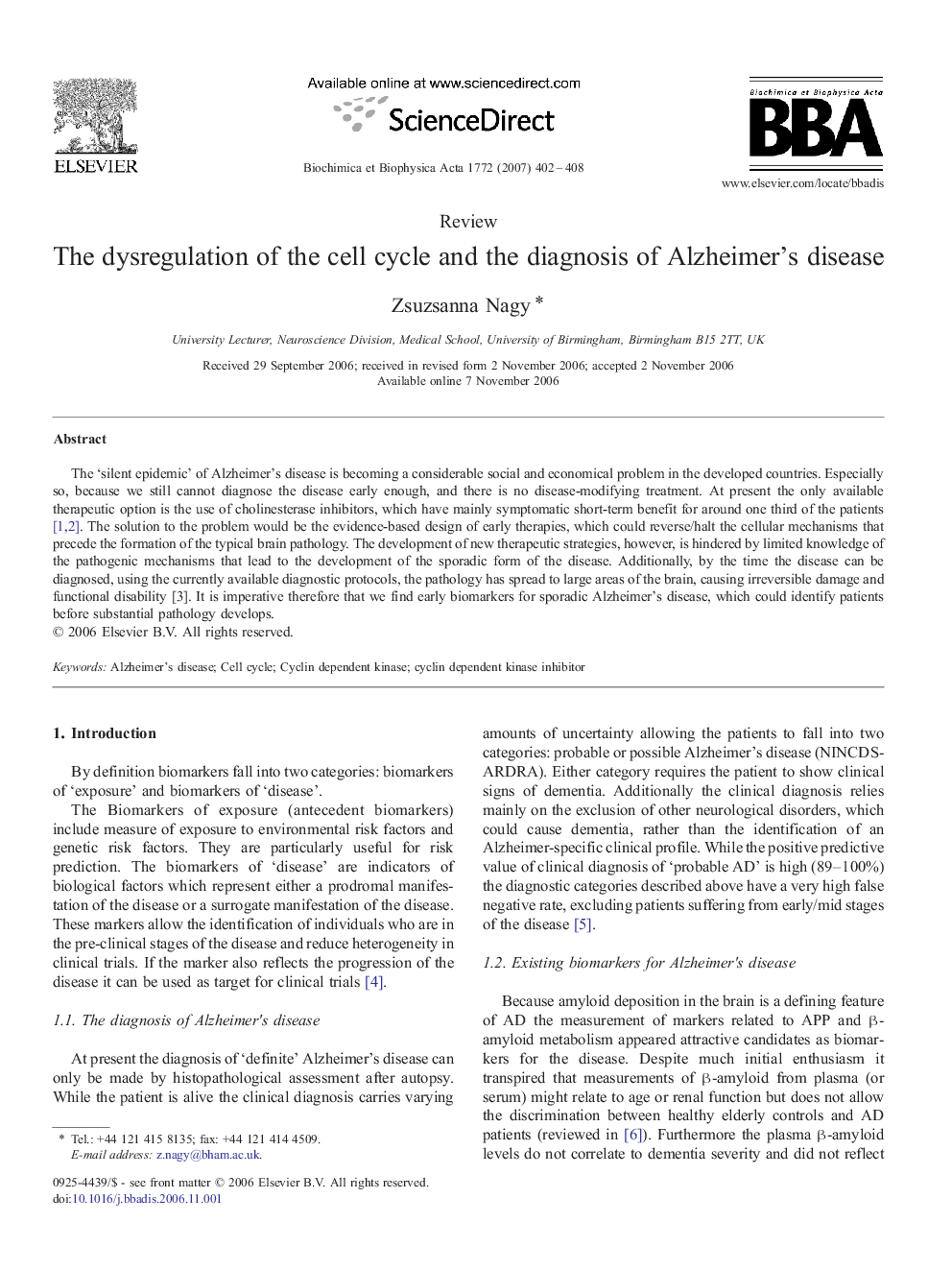| Article ID | Journal | Published Year | Pages | File Type |
|---|---|---|---|---|
| 1905816 | Biochimica et Biophysica Acta (BBA) - Molecular Basis of Disease | 2007 | 7 Pages |
The ‘silent epidemic’ of Alzheimer's disease is becoming a considerable social and economical problem in the developed countries. Especially so, because we still cannot diagnose the disease early enough, and there is no disease-modifying treatment. At present the only available therapeutic option is the use of cholinesterase inhibitors, which have mainly symptomatic short-term benefit for around one third of the patients [1] and [2]. The solution to the problem would be the evidence-based design of early therapies, which could reverse/halt the cellular mechanisms that precede the formation of the typical brain pathology. The development of new therapeutic strategies, however, is hindered by limited knowledge of the pathogenic mechanisms that lead to the development of the sporadic form of the disease. Additionally, by the time the disease can be diagnosed, using the currently available diagnostic protocols, the pathology has spread to large areas of the brain, causing irreversible damage and functional disability [3]. It is imperative therefore that we find early biomarkers for sporadic Alzheimer's disease, which could identify patients before substantial pathology develops.
